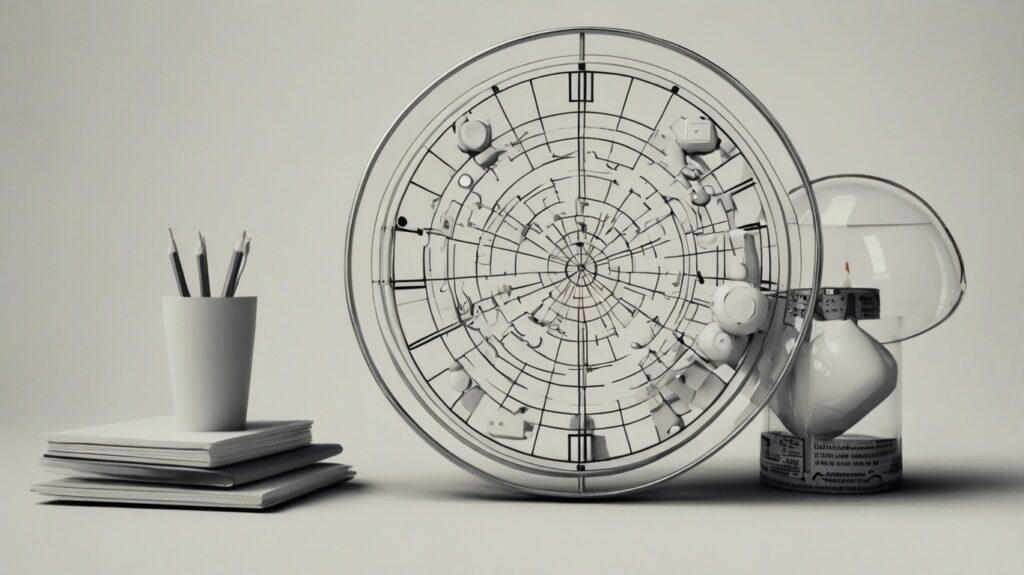Before explaining the types of reliability in research, it is essential to know what is reliability?
Reliability
The instrument’s accuracy, stability, and consistency are maintained by reliability. Reliability plays a role in determining validity, although it’s important to note that an instrument can be reliable without being valid. However, it’s not true that a valid tool always ensures reliability. Reliability is not as highly valued as validity, but it is relatively easier to assess than validity.
When an instrument meets the criteria for reliability, we can use it confidently, knowing that external factors won’t cause any interference. A research instrument that consistently produces consistent results when used under similar conditions is considered reliable. In other words, reliability in research, in its simplest form, refers to the consistency of a measuring test or quantitative research study.
Example: Imagine that you are using a thermometer to find out how hot the water is. If you put the thermometer in the water more than once and get the same number each time, you can trust the reading. This means that your method and way of measuring always give the same results, no matter if you or another expert is doing the measuring.
Types of Reliability in Research
There are two types of reliability; internal and external reliability.

Internal Reliability
It evaluates the consistency of findings in items within a test. For instance, it is important to ensure that the items on a questionnaire or questions in an interview test a similar aspect.
External Reliability
It pertains to the uniformity of a process across different instances. For example, if a participant took an IQ test one year and then took the same test a year later and achieved a remarkably similar score, it means that there is an external reliability.
| Types of Reliability | Measures the consistency of . . . . . . | |
| Internal Reliability | Split-Half Method | The individual items of a test. |
| External Reliability | Test-retest | Similar testing over a period of time. |
| Inter-rater | A similar test is conducted by various persons. | |
| Parallel forms | Various versions of a test are created to ensure their equivalence. | |
There are two commonly used methods to measure internal consistency.
Average Inter-item Correlation
When evaluating a group of measures that aim to assess the same concept, you can determine the correlation between the results of each possible pair of items and then find the average.
Split-half Reliability
You divide a set of measures into two separate sets. Once the entire set has been tested on the respondents, the correlation between the two sets of responses is calculated.
Split-Half Method
The split-half method evaluates the internal consistency of a test, such as questionnaires and psychometric tests. There, it assesses the degree to which every aspect of the test contributes equally to what is being analyzed. This is accomplished by comparing the outcomes of one portion of a test with the outcomes of the other portion.
A test can be divided in half in various ways, such as by the first half and the second half or by even and odd numbers. If the two halves of the test yield comparable results, it would indicate that the test demonstrates internal reliability. This method has the potential to enhance the reliability of a test. For instance, if there are items on separate halves of a test with a low correlation (e.g., r = .25), it would be recommended to either remove or rewrite them.
The split-half method is a convenient and efficient approach to determine reliability. However, for optimal effectiveness, it is important to use large questionnaires where all questions measure the same construct. This indicates that tests measuring different constructs would not be suitable in this context.
Test-retest Reliability
Test-retest reliability examines the consistency of results when the same test is administered to the same sample at various aspects in time. This is typically used when you are measuring something that is expected to remain constant within your sample. For instance, a color blindness test for trainee pilot applicants should possess a high level of test-retest reliability. This is because color blindness is a characteristic that remains constant over time.
Importance
Various factors can impact your results at different times. For instance, respondents may have varying moods or external circumstances could affect their ability to provide accurate responses. Test-retest reliability is a useful tool for evaluating the ability of a method to resist various factors over an extended period. The test-retest reliability is higher when the difference between the two sets of results is smaller.
How to measure?
In order to assess test-retest reliability, the same test is administered to a group of individuals at two separate time points. After that, you determine the correlation between the two sets of results.
Inter-rater Reliability
Inter-rater reliability, also known as inter-observer reliability, quantifies the level of consensus among individuals who are observing or evaluating the same phenomenon. This method is commonly employed when researchers collect data by assigning ratings, scores, or categories to one or more variables.
It serves as a valuable tool in reducing observer bias. For instance, in an observational study where a team of researchers gathers data on classroom behavior, it is crucial to ensure inter-rater reliability. This means that all the researchers must reach a consensus on how to categorize or rate various types of behavior.
Importance
People have their own unique perspectives, so it’s only natural that different observers will perceive situations and phenomena differently. Objective research strives to minimize subjectivity in order to facilitate reproducibility by other researchers. When developing the scale and criteria for data collection, it is crucial to ensure that individuals will assess the same variable consistently and with minimal bias. It is crucial to prioritize this aspect, particularly when there are several researchers participating in data collection or analysis.
How to measure?
In order to assess inter-rater reliability, various researchers carry out identical measurements or observations on a same sample. After that, you can determine the correlation between their various sets of results. If all the researchers provide consistent ratings, it indicates a strong level of inter-rater reliability for the test.

Parallel Forms Reliability
Parallel forms reliability assesses the correlation between two identical versions of a test. It is used when there are two distinct assessment tools or sets of questions aimed at measuring the same thing.
Importance
If you’re interested in using multiple versions of a test to prevent respondents from repeating answers from memory, it’s important to ensure that all sets of questions or measurements yield reliable results. For instance, in educational assessment, it is frequently required to develop various versions of tests to prevent students from obtaining the questions in advance.
Parallel forms reliability refers to the consistency of results when different versions of a reading comprehension test are administered to the same students. It ensures that the outcomes of both tests are comparable.
How to measure?
One common method for assessing parallel forms reliability involves creating a substantial number of questions that assess the same construct. These questions are then randomly divided into two separate sets. The same group of respondents answers both sets, and the correlation between the results is then calculated. The strong correlation between the two suggests a high level of parallel forms reliability.
Differences between Reliability and Validity in Research
| Sr No | Category | Reliability | Validity |
| 1 | Meaning | Emphasizing consistency in measurements across time and conditions. | It is concerning the accuracy and relevance of measurement in recording the desired construct. |
| 2 | What it assesses | Evaluates if consistent results can be achieved through repeated measurements. | Determines if a measurement actually captures the target object. |
| 3 | Assessment methods | Evaluations include test-retest, inter-rater, and internal consistency. | Tested through Content coverage, construct alignment, and criterion correlation. |
| 4 | Interrelation | A measurement can be consistent without being accurate. | Most valid measurements are reliable, but reliability does not ensures validity. |
| 5 | Importance | Maintains consistency in data and replication. | Provides significant and accurate outcomes. |
| 6 | Focus | Emphasizes measurement stability and consistency. | Focuses on measuring accuracy and meaning. |
| 7 | Outcome | The goal is measurement reproducibility. | The goal is meaningful and accurate measuring results. |
In short, validity, in a broader sense, refers to the research instrument’s ability to show that it is uncovering what it was intended to, while reliability refers to the consistency of its findings when used repeatedly.






